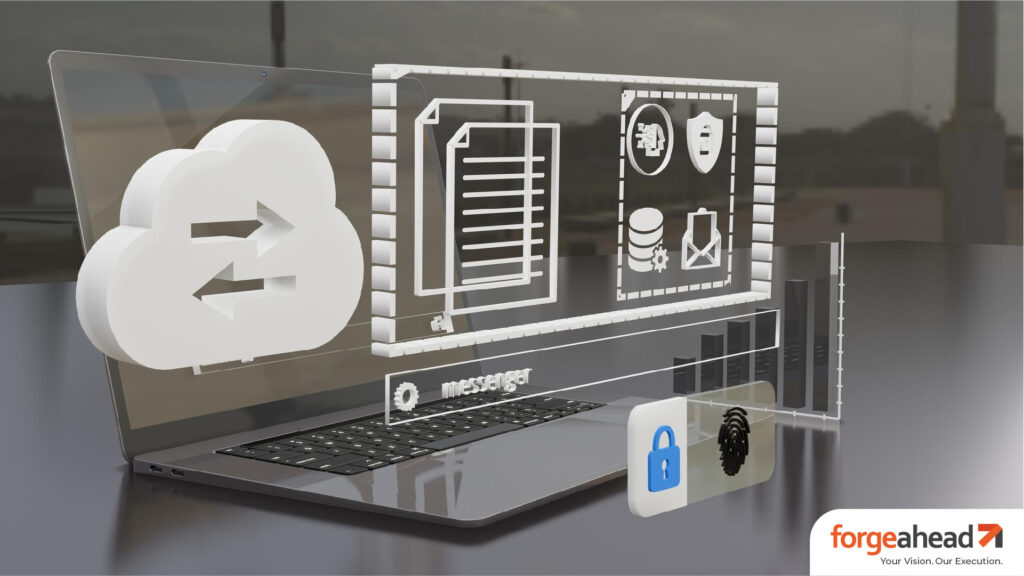Last updated on May 9th, 2024
Imagine if every data-driven decision could be faster, sharper, and more intuitive.
That’s the promise of edge computing in today’s cloud-centric world.
Edge computing reshapes cloud infrastructure, offering a new edge in performance and responsiveness.
As businesses push the boundaries of digital innovation, the traditional centralized cloud infrastructure struggles to keep pace with the sheer volume of data generated at every corner of the network.
Edge computing emerges as a pivotal solution, promising not only to curb latency but to revolutionize how data interacts with our daily operations.
But what are the risks of not adapting quickly to this technological evolution?
Understanding Edge Computing
Edge computing refers to a distributed computing paradigm that brings computation and data storage closer to the location where it is needed, aiming to improve response times and save bandwidth.
This approach stands in contrast to traditional cloud systems where computations are centralized in distant data centers.
This distributed approach is what sets edge computing apart in the realm of cloud infrastructure, promising a leap in response times.
The Significance of Decentralization
Decentralizing computing resources through edge computing allows organizations to process data almost instantaneously, as it is generated.
This is crucial for applications requiring real-time processing and analysis, such as IoT devices in smart homes, autonomous vehicles, and remote industrial operations.
By handling data locally, edge computing minimizes latency, reduces transmission costs, and enhances the speed and efficiency of data-driven applications.
Decentralizing with edge computing addresses the core challenges of modern cloud infrastructure, offering solutions where latency and bandwidth are prime concerns.
Benefits of Cloud Infrastructure
The integration of edge computing with existing cloud setups unveils numerous benefits, from slashing latency to bolstering scalability.
1. Reduced Latency: Processes data locally, decreasing the time taken for data to travel to and from the cloud, enhancing user experiences with faster responses.
2. Improved Scalability: Enables dynamic scaling of resources, allowing systems to adjust in real-time to varying loads without overburdening the core network.
3. Enhanced Data Security: By processing data locally, it reduces the exposure of data to potential vulnerabilities during transmission over long distances.
4. Increased Reliability: Maintains functionality during network disruptions, ensuring continuous service availability by relying on local processing.
5. Cost Efficiency: Decreases bandwidth costs by reducing the amount of data that needs to be sent to the cloud, optimizing infrastructure expenses.
6. Facilitates Real-Time Analysis: Allows for the immediate analysis of data for time-sensitive applications, crucial in sectors like healthcare and manufacturing.
7. Supports IoT Growth: Provides the necessary infrastructure to handle the vast data generated by IoT devices efficiently, fostering expansion in IoT deployment.
8. Drives Innovation: Empowers organizations to develop new applications and services that leverage closer data analysis and real-time decision-making capabilities.
These points collectively highlight how edge computing can significantly boost the performance, efficiency, and innovative capabilities of cloud infrastructure.
Integrating Edge Computing with Existing Cloud Infrastructure
Integrating edge computing into an existing cloud setup requires a thoughtful approach that balances innovation with practical deployment considerations.
Here’s how to get started:
1. Architectural Design Considerations
Begin by evaluating your current cloud architecture. Design a hybrid model that incorporates edge devices where data generation and consumption occur. This might involve segmenting certain processes that are better handled at the edge.
2. Enhancing Network Connectivity
Ensure robust and secure connectivity between edge devices and the central cloud. This may include upgrading to more reliable communication links or employing new networking technologies like 5G, which offers faster speeds and lower latency.
3. Deployment Models
Choose the right deployment model based on your needs. Options include cloud-managed edge solutions, where the cloud provider controls edge computing resources or an on-premises approach that allows more control but requires higher management overhead.
4. Pilot Testing
Before full-scale implementation, start with a pilot project that integrates edge computing into a section of your network. Monitor performance and iron out any issues that arise.
5. Scalability Plans
As edge computing expands within your organization, plan for scalable solutions that can grow with your demands without compromising performance.
6. Security Protocols
Implement stringent security measures to protect data across all points of your network, especially given the distributed nature of edge computing.
By following these guidelines, organizations can effectively harness the power of edge computing, making their cloud infrastructure more responsive, agile, and suited to modern digital demands.
How will you tailor these strategies to best fit your organization’s specific needs?
Transforming Industries with Edge Computing
Real-world edge computing use cases across healthcare, manufacturing, and retail showcase the transformative benefits of cloud infrastructure.
1. Healthcare
Hospitals utilize edge computing to process patient data in real time, enhancing the responsiveness of medical monitoring systems and improving patient care.
2. Manufacturing
In smart factories, edge devices monitor and analyze machinery performance on the production line, enabling immediate adjustments to improve efficiency and reduce downtime.
3. Retail
Edge computing helps retail chains manage inventory more effectively by processing data from IoT devices in-store, ensuring stock levels are accurately maintained in real time.
4. Automotive
Automakers are embedding edge computing capabilities in vehicles to process data from sensors in real time, significantly improving the responsiveness and safety features of autonomous cars.
5. Smart Cities
Cities are deploying edge computing to manage traffic flow through real-time data analysis, helping to reduce congestion and enhance urban mobility.
These examples illustrate how edge computing not only addresses the limitations of traditional cloud setups but also opens up new possibilities for innovation across various sectors.
Navigating Challenges in Edge Computing
Implementing edge computing brings its set of challenges, but with strategic approaches, these can be effectively managed.
| Challenges | Strategies for Management |
| Data Management Complexities | Employ data normalization techniques to streamline data aggregation and analysisUse centralized management systems to handle diverse data types and sourcesImplement automated tools for data categorization and analysis to ease management burdens |
| Security Risks | Encrypt data both in transit and at rest to enhance securityEmploy robust authentication protocols and regularly update security firmwareConduct regular security audits and vulnerability assessments to proactively identify and mitigate risks |
Future Trends and Considerations in Edge Computing
As edge computing continues to evolve, emerging trends and developments promise to further enhance its impact and scope. Understanding these trends is crucial for staying ahead in the rapidly changing tech landscape.
Edge AI and 5G Integration
The convergence of edge computing with artificial intelligence (Edge AI) is set to revolutionize many industries by enabling smarter, autonomous decision-making at the edge.
Meanwhile, the rollout of 5G networks enhances this capability with faster data transmission rates and lower latency, making Edge AI more effective and widespread.
These advancements facilitate real-time analytics and responses, which are critical in scenarios such as autonomous driving and real-time remote monitoring.
Developing Edge Computing Standards
As the technology matures, establishing robust standards for edge computing will be essential to ensure compatibility and security across different devices and platforms. These standards will help streamline implementation and integration providing a framework that supports the expansive deployment of edge technologies.
By keeping an eye on these developments, organizations can better prepare to adopt and integrate cutting-edge edge computing solutions, ensuring they leverage the full potential of this transformative technology.
Embrace the Edge: The Future of Cloud Infrastructure
In conclusion, edge computing is not just a technological advancement; it’s a transformative shift that enhances performance, scalability, and security across numerous industries.
Integrating edge computing into your cloud infrastructure can lead to significant improvements in response times, data handling, and overall operational efficiency.
Don’t miss the opportunity to be at the forefront of this innovation wave.
Partner with Forgeahead to navigate your edge computing integration smoothly and effectively.
Explore how our expertise can make your transition seamless and future-proof your technology landscape.
Let’s forge ahead together into the new era of cloud computing.



